Yellow Fever
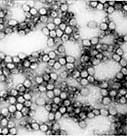
Yellow Fever, a disease caused by the bite of the Aedes Aegypti mosquito, is common in Latin America, South America and parts of Africa.
Despite the development of a Yellow Fever vaccine over 60 years ago, urban outbreaks have occurred in Africa, largely due to lack of immunization or low immunization rates of many urban populations.
Yellow Fever
If you are traveling to certain countries in Sub-Saharan Africa or certain countries in South America, your doctor may advise you get a vaccine against yellow fever. It’s a smart precaution to take, since yellow fever can cause hepatitis or serious damage to your liver. In fact, the most common symptoms of the condition — jaundice/yellow skin and fever — are linked to liver damage from the virus. The condition can cause other damage as well and can even lead to death, so it’s smart to take steps toward yellow fever prevention.
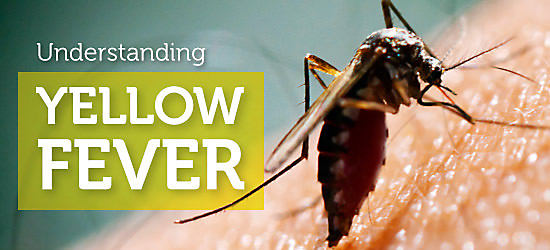
What is Yellow Fever? Understanding the Virus
Yellow fever is a viral infection leading to organ damage, especially to the liver. There are about 200,000 cases of the yellow fever virus each year, killing about 30,000 people. Changing populations, larger cities, climate changes and lower immunity have meant internationally the number of cases is on the rise. In fact, the World Health Organization reports in Latin America the risk of yellow fever is the highest it’s been for nearly half a century.
So what is the cause of yellow fever? At its simplest, it’s caused by infected mosquitoes. The insects spread a viral hemorrhagic disease called yellow fever through their bite.
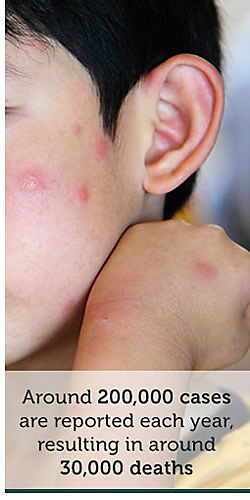
How Do You Get Yellow Fever?
How is yellow fever transmitted? In most cases, someone will get the virus because they are bitten by an infected mosquito. The virus can also spread directly through the blood if an infected person shares needles with others. No other direct person-to-person contact can spread the infection.
Yellow Fever Symptoms?
Some patients never experience any symptoms of yellow fever, while for others symptoms appear within three to six days of infection. The symptoms of the infection usually appear in three stages. The first stage, which appears a few days after a mosquito bite, can include symptoms such as:
- Headaches
- Dehydration
- Muscle and joint aches
- Backache
- Loss of appetite
- Vomiting
- Flu-like symptoms
- Fever
- Chills
After this initial phase, most patients start to feel better. For most patients, this is the end of the symptoms. For about 15-25% of patients exposed to the Yellow Fever virus, however, there is a third and more serious stage, according to WebMD. At this stage, symptoms might include:
- High fever
- Dehydration
- Internal bleeding
- Shock
- Bleeding from the eyes, mouth or nose
- Blood in the stools
- Vomiting blood
- Jaundice, including yellowed eyes and skin
- Red tongue, eyes and face
- Shock
- Inflammation of the liver, or hepatitis
- Organ failure
- Seizures
- Coma
- Death
These frightening symptoms are caused by something called viral hemorrhagic fever, which causes damage to the organs and even the circulatory system, potentially threatening the life of the patient. About half of the patients who reach this stage will not survive yellow fever, WebMD says.
Those who survive may need a lifetime of care because some of their organs, such as their heart, lungs, kidneys or liver, have suffered damage. Someone who’s suffered kidney damage because of yellow fever, for example, may need dialysis for the rest of their lives. Someone who’s suffered damage to their heart may need to take medications or get other treatment to manage heart failure. Even after the symptoms pass, lives can be forever changed by yellow fever.
Where is Yellow Fever Found?
Yellow fever is most commonly found in parts of Africa and parts of Central and South America. In these areas, it is at endemic levels and can reach epidemic levels. West Africa and South America have especially high rates of exposure. According to the CDC, the risk of an unvaccinated person traveling for two weeks in West Africa contracting yellow fever are 50 per 100,000. The risk of the same person contracting the virus on a two-week vacation in South America are 5 per 100,000.
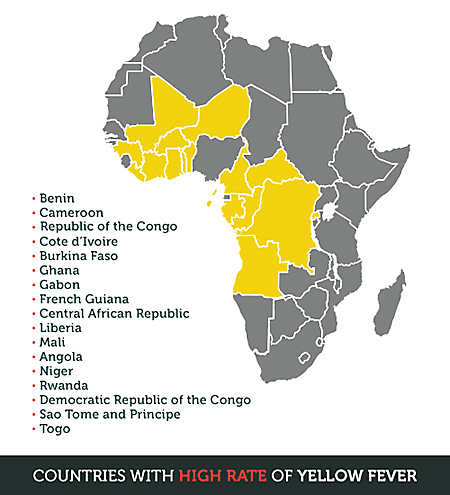
Countries with especially high rates of yellow fever include:
- Benin
- Cameroon
- Republic of the Congo
- Cote d'Ivoire
- Burkina Faso
- Ghana
- Gabon
- French Guiana
- Central African Republic
- Liberia
- Mali
- Angola
- Niger
- Rwanda
- Democratic Republic of the Congo
- Sao Tome and Principe
- Togo
In addition to these countries, other nations in Sub-Saharan Africa and Central and South America have high rates of the virus. Urban areas tend to be especially affected. Yellow fever in the U.S. isn’t as common and usually is brought back to the county when people travel to high-risk nations. They are bitten by mosquitoes overseas and return to the U.S. infected.
How Can Someone Tell if They Have Yellow Fever?
The only way to know whether you have yellow fever is to visit a doctor. If you have traveled to a country where yellow fever is an endemic or pandemic and you develop a fever or any other symptoms, see a doctor right away. A doctor will look at your symptoms, consider your travels, and run tests to determine whether you have been infected.
A doctor may also run tests to check for liver or organ damage. It’s important to seek medical help right away if you think you have symptoms, since yellow fever can be deadly and you’ll want to start treatment right away.
Treatments for Yellow Fever
There is currently no cure for the yellow fever virus, but if you have been infected, early medical treatment can help. If you have been exposed to the virus, doctors may want to hospitalize you to monitor your symptoms. They will usually offer you treatment for the symptoms of your condition.
For example, you might get medication for your fever and muscle aches and an IV to treat dehydration. If you are taking any anti-inflammatory drugs that can thin the blood, such as aspirin, you’ll need to stop taking those drugs because of the risk of internal bleeding. If your condition is serious because of organ damage, doctors may be able to treat those problems.
The Yellow Fever Shot
Because there is no cure for the virus, it’s very important to get your yellow fever vaccine if you’ll be traveling to any high-risk areas. In fact, to even get into some higher-risk countries you might have to show your International Certificate of Vaccination to prove you’ve had the yellow fever shot.
Like all vaccines, the yellow fever vaccine has side effects. In fact, this vaccine is live and comes with higher risks than many other inactive vaccinations. Some patients experience flu-like symptoms due to the vaccine while some develop serious allergic reactions to the shot. Some develop life-threatening reactions. If you develop any strange symptoms after taking the shot, visit your doctor immediately.
Keep in mind, too, no vaccine is 100% effective. Some people may get the yellow fever vaccination but still develop yellow fever.
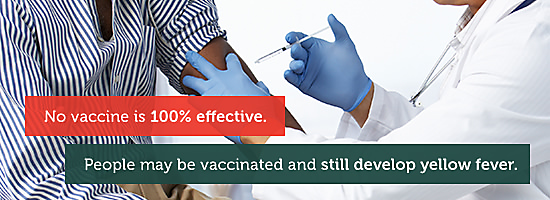
Generally, doctors recommend anyone who is traveling to at-risk countries and is older than nine months should get the vaccine. To reduce the risk of adverse reactions, though, you should talk to your doctor before getting the shot if you:
- Have any issues with your immune system because you have HIV, another condition, or have received cancer treatments or any other treatments affecting your immune system
- Have cancer or have gone into remission
- Have problems with your thymus gland
- Are over 65 years old
- Want to get a young child under nine months vaccinated
- Have had allergic reactions to yellow fever or other vaccines
- Have allergies to gelatin, chicken or eggs
- Are pregnant or may be pregnant
- Are breastfeeding
If you can’t get a vaccine because your doctor considers the risks too high, you may want to revise your travel plans. If you have to travel somewhere where you need an International Certificate of Vaccination, you may need written proof you have an exemption from the yellow fever shot. You may not be able to travel without this written document in some countries.
How Long Does the Yellow Fever Vaccine Last?
The vaccine is considered active after about ten days, and most doctors recommend you get the shot at least ten days before you travel. Some doctors will recommend you get the shot a month before you travel so you can enjoy the full effects of the vaccination. Giving yourself extra time is also important if you get flu-like or other symptoms because of the shot; you’ll have extra time to recover and won’t travel when not feeling your best.
The yellow fever shot lasts about ten years, so if you frequently travel to Africa or affected parts of South and Central America, you will need to get vaccinated about once a decade. Talk to your doctor if you have questions about the shot or you’re at risk for contracting the virus.
How to Prevent Yellow Fever
How can yellow fever be prevented when you travel? The best way to prevent infection is to prevent mosquito bites. You can protect yourself by following these tips:
- Apply mosquito repellant when you travel. Look for formulas containing DEET, IR3535, oil of lemon, eucalyptus or picaridin. Always check the expiration date and follow the instructions on the bottle when applying.
- Apply mosquito repellant to your clothes, tents, hotel window screens and mosquito nets. This will keep mosquitoes from even approaching you. Look for a formula with permethrin.
- Use window screens to prevent mosquitoes from getting inside your apartment or hotel room. Check screens for cracks and holes.
- Use mosquito netting sprayed with insect repellant at night. It’s an extra layer of protection.
- Wear long-sleeved shirts and pants. Cover up as much as possible to leave less exposed skin available for bites. Look for light, pale fabrics. They will still let your skin breathe and keep you from overheating.
- Avoid heading into areas where there are lots of mosquitoes between dusk and dawn. This is when many of the insects are most active and most likely to bite.
Since it’s difficult to prevent all insect bites, keep a journal of the dates you travel, where you travel, and any insect bites you notice. If you develop any symptoms, this information can help your doctor diagnose you correctly.
More Permanent Solutions to Mosquito Problems
At the heart of yellow fever risk is the mosquito, which is the way most people get the virus. If you can reduce the number of mosquitoes around you, you can drastically reduce the risk of bites and infection. While you may not have a huge risk of getting yellow fever from mosquitoes in the U.S., people from high-risk areas return to the U.S. all the time, some of them carrying yellow fever or other conditions. These can easily be transmitted by mosquito.
The Aedes Aegypti Mosquito, the same mosquito that carries yellow fever, can also carry the Dengue Fever and Chikungunya disease. When there are mosquitoes on your property, you are at risk. Part of your yellow fever protection plan should be to keep mosquitoes to a minimum so you have a lower chance of bites.
The best way to protect yourself and your family is to reduce the population of mosquitoes around you. If you are staying in a high-risk area for some time or want to reduce the risk of mosquito bites and illness in your own home, there are steps you can take to reduce the number of mosquitoes.
One of the first and simplest steps to take is to reduce the breeding grounds available to mosquitoes. Mosquitoes like to lay eggs in wet, warm climates. Lakes, ponds and any still water — even very small amounts— can be enough to house thousands or more mosquito eggs and larvae. You can destroy these breeding grounds by eliminating standing water and shade near your home. Be especially on the lookout for:
- Standing water in tires
- Bird baths
- Ditches
- Standing water in pot holes or containers
- Rain barrels
- Overgrown weeds and grass
In some cases, you may not have much control over possible breeding grounds. For example, you might not be able to do much about a standing pool on a neighboring property or swampy grounds on your own land. In these cases, mosquito traps can be a solution.
Mosquito traps work by reducing the total number of mosquitoes — including the female mosquitoes, which not only lay eggs but are also the ones to bite. With fewer mosquitoes around, fewer eggs are laid, and within a few weeks there is a noticeable drop in the number of mosquitoes. The World Health Organization (WHO) believes controlling mosquitoes is one of the more effective long-term solutions for yellow fever and supports campaigns of mosquito control.
Use Mosquito Magnet® to Reduce Mosquitoes
You don’t need a complicated system to reduce the number of mosquitoes near your home. Mosquito Magnet® mosquito traps draw mosquitoes to the trap with a mixture of heat, C02, moisture and a secondary attractant. When mosquitoes approach the trap, they are whisked into a net through a vacuum, where the insects dehydrate and die. This safe alternative to chemical sprays and insecticides can be another solution in your arsenal against mosquito bites and the diseases they carry.
When you combine Mosquito Magnet® with insect repellants and a system for getting rid of standing water near your home, the number of mosquitoes near you might decrease considerably. Wouldn’t it be nice to get through a summer without being covered in bites? Not only will you be able to enjoy the outdoors more, but you might be able to avoid yellow fever and other mosquito-borne illnesses.
 Protect your family, pets and guests from disease-carrying mosquitoes with a Mosquito Magnet® trap - the leading long-term, scientifically-proven mosquito control solution
Protect your family, pets and guests from disease-carrying mosquitoes with a Mosquito Magnet® trap - the leading long-term, scientifically-proven mosquito control solution
